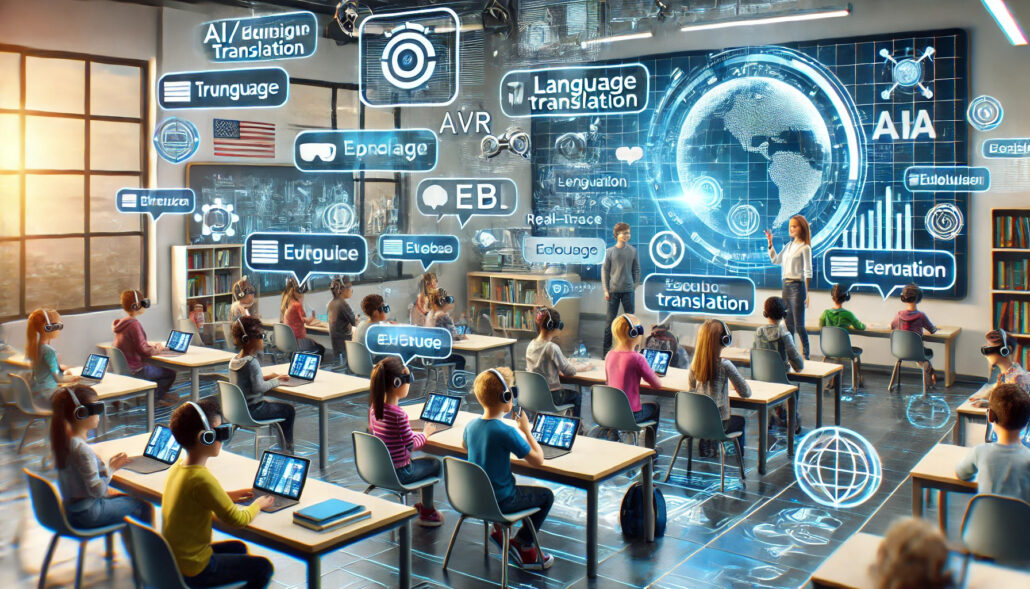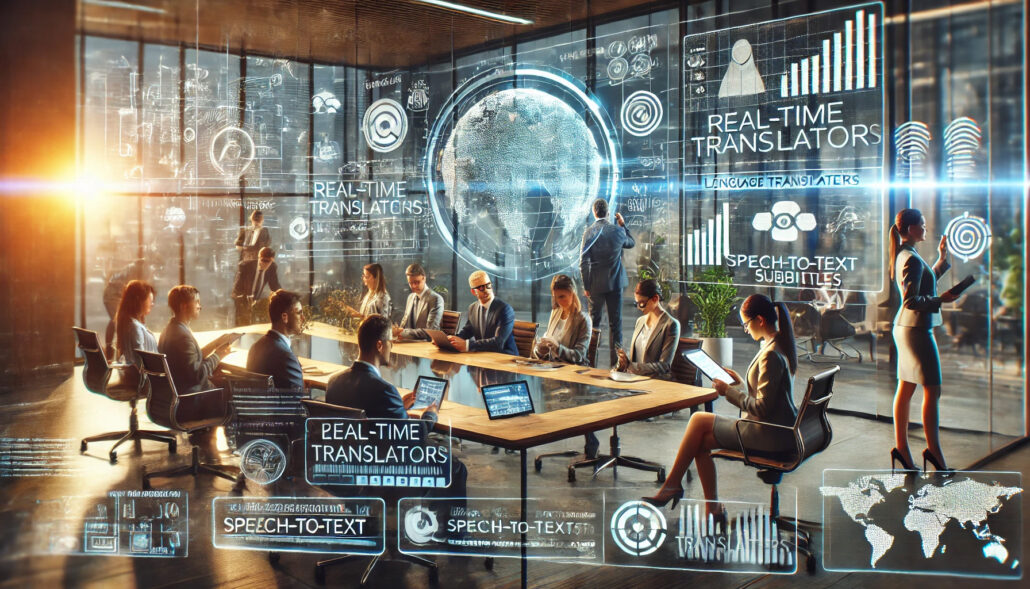Language Translator Trends Shaping Education, Government, and Beyond in 2025
The future of translation technology will break barriers and revolutionize accessible environments for the multilingual and hearing impaired. With AI paving the way for more accurate language services, translation technology will be indispensable in bridging language gaps. Read on to uncover the emerging language translator trends, offering guidance for leveraging these tools in educational and governmental contexts.
Language Translator Trends in Education
Translation Tech Revolution
Translation technology is a game-changer for education. It will improve accessibility for diverse student populations and parent engagement like never before.
Here’s how:
-
Real-Time Communication Tools
Schools are increasingly adopting AI-powered solutions like TranslateLive, Google Translate, and Microsoft Translator to enhance communication with multilingual families. Tools like TranslateLive enable seamless, real-time, simultaneous translation during parent-teacher conferences, administrative meetings, and school events. These tools help build relationships with non-English-speaking parents, ensuring families are actively involved in their children’s education.
-
Enhanced Accessibility with Speech Recognition
The growing adoption of Speech-to-text and voice-to-voice translation technologies makes lessons more accessible for multilingual and hearing-impaired students. It also fosters inclusivity in the classroom and strengthens parent engagement. These tools enhance transcription accuracy and enable natural, real-time conversations.
-
Immersive Learning with AR/VR
Augmented and virtual reality platforms integrate real-time translation features. These features provide students with immersive environments in which to practice languages in context. Tools like Immerse and Mondly VR offer interactive language-learning experiences where students can engage in simulated real-world scenarios. Such scenarios include ordering food at a restaurant or navigating a foreign city while receiving instant feedback and translation support.
Platforms like Engage VR support multilingual collaboration in virtual meeting spaces. These platforms allow educators and students to communicate seamlessly across languages. By creating realistic, engaging, and inclusive learning experiences, AR/VR technologies are transforming how students acquire language skills and connect globally.
-
Culturally Relevant Learning
AI-driven tools tailor learning experiences to individual proficiency levels and recommend culturally nuanced resources in students’ preferred languages. TranslateLive’s ILA, adopted districtwide by Boston Public Schools, exemplifies how translation devices address cultural differences effectively. ILA offers the most dialect options, including over 20 dialects in Spanish alone, ensuring cultural diversity even within the same language. This tool enables accurate, real-time translation during crucial interactions, such as parent-teacher conferences and administrative meetings.
-
Family Engagement Transformation
Translation tools are revolutionizing family engagement by breaking down language barriers between school staff and non-English-speaking families. Real-time translations of newsletters, administrative communications, and meetings ensure parents can stay informed and involved. This improved communication fosters trust and collaboration, leading to better student outcomes.

2025 Language Translator Trends for Government, Nonprofits and Corporations
Government Role in Translation Technology
Language translator trends drive innovation across industries with significant advancements in government and business applications.
-
Government Adoption of Translation Tools
AI-powered translation technology ensures all citizens, regardless of language, have access to vital information and services. For example, the City of Chandler’s adoption of TranslateLive technology demonstrates how real-time multilingual interactions can improve public engagement and service accessibility for all municipalities.
TranslateLive language translator tool provides real-time communication for dynamic scenarios, such as emergencies or public services, ensuring critical information reaches diverse populations. Such measures are essential for fostering public engagement and trust. By investing in translation tools, governments demonstrate a commitment to diversity and equality, setting a precedent for other sectors to follow.
-
Streamlining Public Services
Translation technology in 2025 will improve transparency, reduce wait times, and foster community trust among government agencies. Integrating translation solutions into government operations enhances document translation, real-time communication, and multilingual customer service. For example, implementing TranslateLive language translation tools by entities like Cal/OSHA demonstrates how these technologies can facilitate clear communication between officials and non-English speaking workers, promoting safety and compliance.
-
Blockchain for Credentialing Language Skills
Blockchain is emerging as a secure and transparent solution for credentialing language skills. This technology provides immutable, verifiable records, enabling governments and educational institutions to validate multilingual qualifications efficiently. Blockchain offers a promising way to ensure accuracy and prevent fraud. Its potential use in education and government sectors underscores its role as an innovative tool for the future of language services. One such platform is IBM's Learning Credential Blockchain. Further reading and details can be learned from, "Blockchain Technology: The Future Of Credentialing In eLearning" and "Blockchain and the Future of Digital Learning Credential Assessment and Management."
Nonprofit's Trends in Translation Technology
Maximizing Service Delivery for Nonprofits
Nonprofits are increasingly integrating language translation tools to ensure that multilingual populations can access vital resources, such as housing, food assistance, and healthcare information, without delays. For example, the West Suburban Community Pantry in Woodridge, Illinois, uses TranslateLive’s ILA to facilitate real-time conversations in over 200 languages, allowing staff to greet clients, assist with check-ins, and connect them to additional services.
Complementing in-person interactions, platforms like PantrySoft enhance online service delivery by supporting over 30 languages for food ordering and information access.
West Suburban Community Pantry has seen a 35% increase in non-English-speaking online customers since adopting both language translator technologies, highlighting the effectiveness in expanding access and building trust. These tools also improve the inclusivity of nonprofit outreach efforts by enabling organizations to engage non-English-speaking beneficiaries in their preferred languages, fostering stronger community relationships.
Private Business Trends in Translation Technology
Empowering Businesses in a Global Market
Businesses are adopting sophisticated translation tools to enhance global operations. TranslateLive’s highly secure real-time translation capabilities allow companies to connect with international clients and partners in person or remotely, ensuring effective communication in high-stakes scenarios.
Further, as translation technologies incorporate features like voice recognition, context-aware translations, and machine learning integration, businesses can expand their reach, improve customer satisfaction, and foster inclusivity in the workplace.
We delved into the emerging 2025 language translator trends shaping the future of education, government, and beyond. We hope these insights offer you guidance for effectively leveraging these tools in your industry.


